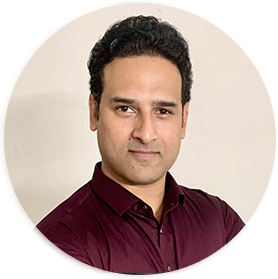What does this question test?
This question tests your ability to establish parallel comparisons. It also tests your understanding of modifiers.
What does this sentence mean?
This sentence presents a few facts about the understanding of the cells in human body. It states that in 1928 two scientists established a certain concept. Before this concept of neurosecretion was established, scientists had a limited vision of the cells. Cell played one of the two roles:
- secreted hormones, making them endocrine cells and hence part of the endocrine system
- conducted electrical impulses, making them nerve cells and hence part of the nervous system
What are the errors in the original sentence?
- Clause 1: Until Berta and Ernst Scharrer established the concept of neurosecretion in 1928,
- Clause 2: scientists believed
- Clause 3: that either cells
- secreted hormones,
- Clause 4: which made them endocrine cells and thus part of the endocrine system, or
- conducted electrical impulses,
- Clause 5: in which case they were nerve cells and thus part of the nervous system.
- secreted hormones,
This sentence has 2 errors:
Parallelism Error: The sentence contains a list as indicated by the use of marker words – either..or.Part of the list is underlined and part of it is non-underlined. Thus, the non-underlined part of the list determines the structure of the list.
- Element 1: Either cells secreted hormones
- Element 2: or conducted electrical impulses
The list should be made parallel by moving “cells” before “either” so that it applies for the “or” portion of the list as well. This way “cells” will be considered common for both elements.
Modifier Error: Clause 4 is a relative pronoun modifier. “which” modifier modifies the closest noun. In this case it modifies “hormones”. This is non-sensical since hormones did not make the cells endocrine cells. It is the fact that the cells secreted hormones that make the cells endocrine cells. Thus, in this sentence, which is intended to modify the action of the preceding clause, but this is not the function of a “which” modifier.
Loved the solution? Take a free trial to get unlimited access to concept files, live sessions, and practice questions. For any strategic advice for GMAT or MBA Admissions, write to us at acethegmat@e-gmat.com. We are the most reviewed GMAT prep company on GMATClub with more than 2400+ reviews
Answer Choice Analysis:
Choice B: This choice has parallelism error as discussed in Choice A. The modifier error in this choice has been corrected by converting the “which modifier” into a “verb-ing modifier” which now can modify the preceding clause.
Choice C: This choice also has parallelism error as discussed in Choice A. In addition this choice changes the intended meaning of the sentence. In the original sentence, the action of secreting hormones made the cells part of endocrine system. In this choice, the two facts are listed as independent facts – cells secreted hormones and cells were part of endocrine system.
Choice D: No errors. Both errors in choice A have been corrected. In choice D, the modifier is now “in which case”. Note that this wording is a repeat of the wording in the element 2 of the list (in non-underlined portion of the sentence). Moreover, in this case, “which” in “in which case” refers to “case” and not the preceding noun – hormones.
Choice E: This choice has modifier error as discussed in Choice A.
Thus, Choice D is the correct answer.
What are the key take-away messages?
- List in a sentence should be made parallel. Order and positioning of words should be consistent in a list.
- Noun modifiers such as “which modifier” can only modify nouns. They cannot modify preceding clauses or the actions in the clauses.
Where can you find more information?
Register at e-gmat to access Sentence Correction free trial.
Loved the solution? Take a free trial to get unlimited access to concept files, live sessions, and practice questions. For any strategic advice for GMAT or MBA Admissions, write to us at acethegmat@e-gmat.com. We are the most reviewed GMAT prep company on GMATClub with more than 2400+ reviews













